Edward G. Miner
Book Collecting Correspondence of Edward G. Miner
Introduction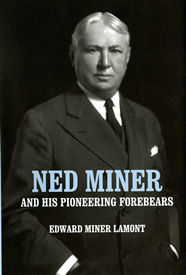
Edward Griffith Miner (1863-1955) was the son of a physician and a native of Waverly, Illinois. In July 1883, he left Waverly to become secretary to the cousin who founded the company with which Miner would be associated for forty-eight years. Assuming increased responsibilities, Miner transformed the Pfaudler Company into the world's largest manufacturer of glass-lined steel containers. Miner was a trustee of the University of Rochester for more than forty years and chairman of the Board of Trustees from 1938 to 1945. He was intensely interested in the University Libraries and was not only a donor of books and funds, but also instrumental in the acquisition of several monographic and manuscript collections.
A biography (pictured above) of Edward G. Miner by his grandson Edward Miner Lamont is available from University of Rochester Press.
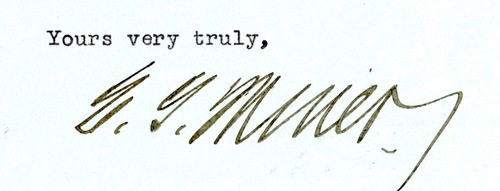
When the University of Rochester School of Medicine & Dentistry opened in 1925, Miner extended his bibliophilic interests to the newly formed Medical Library. With encouragement from George Washington Corner, M.D. (1889-1981), chairman of the Dept. of Anatomy and the Library Committee, Miner began to acquire books and pamphlets on yellow fever and cholera, epidemic diseases in which he had become interested during his travels internationally.
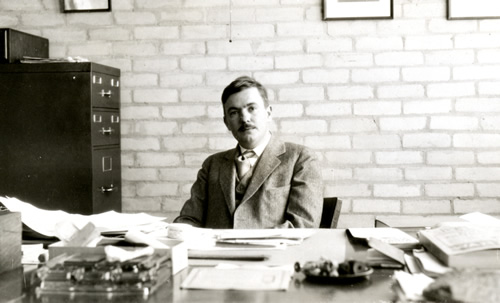
George W. Corner, M.D., circa 1930
The correspondence in this collection chronicles the early development of these two collections within the historical section of the Medical Library. The correspondence from November 1926 to July 1940 is largely between Miner and Corner. After Corner accepted a position at the Carnegie Institute in Baltimore, Miner’s correspondence regarding the yellow fever and cholera collections continues with Mildred E. Walter, medical librarian, and George Packer Berry (1898-1986), assistant dean of the School of Medicine. The collection includes some correspondence with antiquarian booksellers, lists of books purchased or donated at various periods, and documents pertaining to the "Carey Dish," a lidded silver dish presented in 1834 to the Philadelphia publisher and economist Matthew Carey (1760-1839) by his fellow citizens.
Edward G. Miner's early support of the yellow fever and cholera collections has resulted in two of the finest collections on these disease entities in the nation today. The Miner Yellow Fever Collection numbers more than 500 titles published between the mid-18th and early 20th centuries. The Miner Cholera Collection numbers well over 800 books, periodicals and pamphlets published during the 19th century.
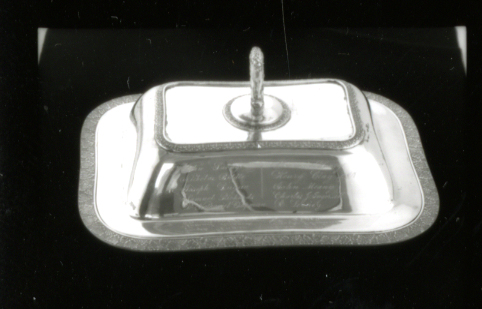
The dish presented to Matthew Carey in 1834
Inventory of the Correspondence
- Folder 1: Correspondence, 1926-1927
- Folder 2: Correspondence, 1928-1929
- Folder 3: Correspondence, 1930-1931
- Folder 4: Correspondence, 1932-1939
- Folder 5: Correspondence, 1940
- Folder 6: Correspondence, 1941
- Folder 7: Correspondence, 1943-1944
- Folder 8: Correspondence, 1945-1946
- Folder 9: Correspondence, 1947-1949
- Folder 10: Correspondence, 1950-1954
- Folder11: The Carey Dish
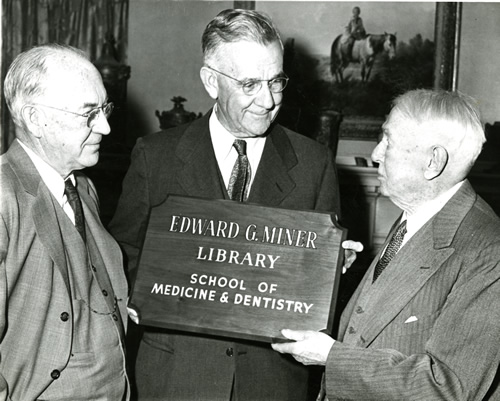
The Medical Library was named in honor of Edward G. Miner in 1952. Left to right: Raymond Ball, George Hoyt Whipple, M.D. and Edward G. Miner